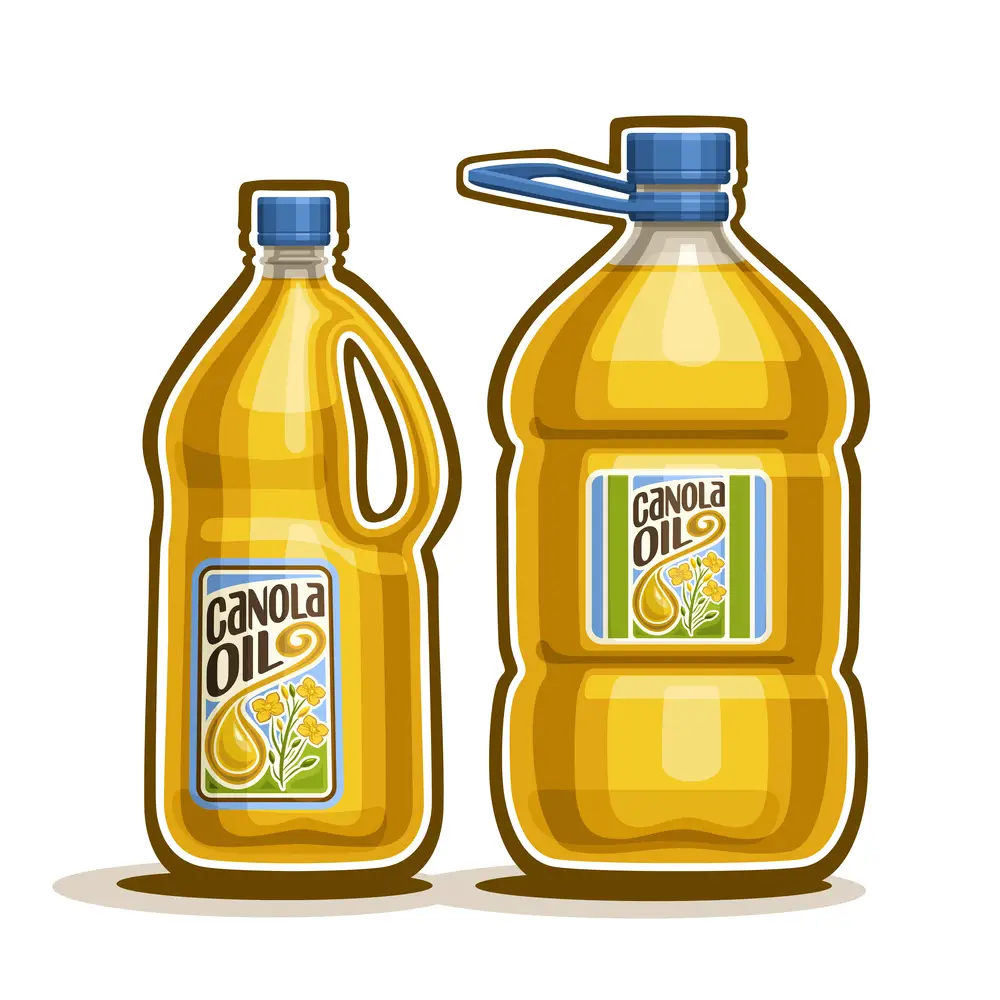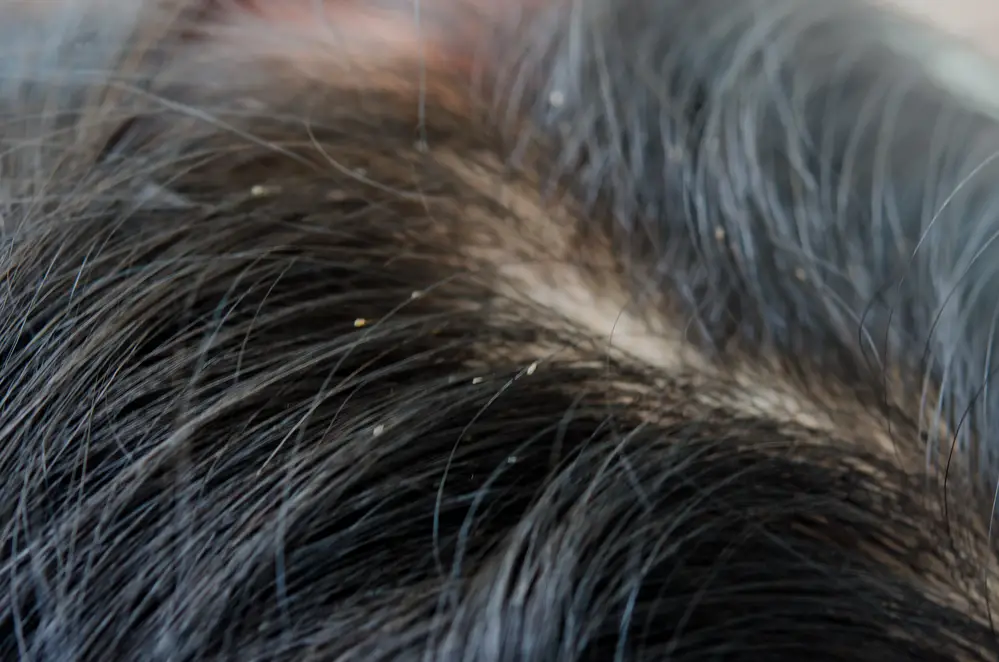The battle against lice often sees people rummaging through their kitchen cabinets, seeking natural remedies. Among the myriad of household items touted as potential saviors, canola oil surfaces as a curious contender.
A staple for frying and baking, but could this unassuming oil double up as a lice assassin?
When it comes to canola oil’s prowess against lice, the discussions heat up.
By understanding the science behind its potential effectiveness, we aim to clarify the fog of home remedies.
Understanding Head Lice and Infestation
Head lice are tiny parasites that live on your scalp and feed on your blood. These pests are usually found among children and can easily spread through close personal contact.
Their infestations can be uncomfortable, but they are not harmful to your overall health.
An adult louse is about the size of a sesame seed. These pests have six legs, allowing them to move quickly through your hair. Female lice can lay up to 8 nits (lice eggs) per day, which eventually hatch into nymphs.
Nymphs are immature lice that grow into adult lice after about 9 to 12 days.
Your first indication of a head lice infestation may be an itchy scalp. This itch is caused by an allergic reaction to lice saliva. You might also notice a red, bumpy rash on your neck and shoulders and even tiny bugs or nits in your hair.
Lice infestations are common and can happen to anyone, regardless of personal hygiene. They spread easily, especially in crowded places like schools and daycare centers.
Head lice cannot fly or jump; they crawl from one person to another by direct head-to-head contact or by sharing personal items such as combs, brushes, or headphones.
When you suspect that you or your child has a head lice infestation, it is essential to promptly prevent the problem from worsening.
There are several over-the-counter treatments and home remedies available for lice removal, but not all of them are equally effective. Picking the right remedy depends on your specific needs and preferences.
Canola Oil and Its Interaction with Lice

When dealing with a lice infestation, you might consider various treatment options. One option you may come across is the use of canola oil. In this section, we will discuss how canola oil interacts with lice and its effectiveness as a lice treatment.
Canola oil, like other oils, can help smother lice when applied to the hair and scalp. By saturating your hair with canola oil, you create a barrier that makes it difficult for lice to breathe. Consequently, this may lead to the dehydration and eventual death of lice.
However, it is essential to remember that canola oil alone might not be enough to entirely eradicate lice infestations. While it can kill some of the adult lice, the effectiveness of canola oil on nits (lice eggs) remains uncertain.
Since nuts have a protective shell, they may be less susceptible to the effects of canola oil.
Moreover, hydration plays a significant role in the life cycle of lice. Lice need to maintain an adequate level of hydration to survive, and canola oil can interfere with this process. By disrupting their hydration levels, you are directly impacting their ability to reproduce and thrive.
To maximize the potential benefits of using canola oil as a lice treatment, it is important to take some additional steps:
- Thoroughly comb your hair with a fine-toothed lice comb to remove dead lice and nits.
- Wash your hair with a gentle shampoo to remove the excess oil.
- Repeat the process a few times, spaced several days apart, to ensure that any remaining nits are dealt with.
Comparing Canola Oil and Other Home Remedies for Lice
Olive Oil
Olive oil is a popular natural remedy for lice due to its ability to suffocate them. To use olive oil as a treatment, simply coat your hair and scalp with a generous amount, making sure to cover all the strands of hair.
Leave it on for at least 30 minutes before washing it out. Keep in mind that you may need to shampoo your hair multiple times to fully remove the oil.
Coconut Oil
Coconut oil, like olive oil, is a commonly used home remedy for lice. It has antibacterial and antifungal properties that can help prevent infections caused by lice bites.
To use coconut oil for lice treatment, apply it generously to your hair and scalp, then cover with a shower cap for at least four hours, or preferably overnight. Afterward, use a lice comb to remove dead lice and wash your hair thoroughly.
Tea Tree Oil
Tea tree oil is famous for its anti-inflammatory and antibacterial properties, which can help eliminate lice and soothe an itchy scalp. Before using tea tree oil on your hair, make sure to dilute it with a carrier oil (like coconut or olive oil) as using undiluted essential oils can cause skin irritation.
Apply the diluted oil mixture to your scalp and hair, then leave it on for about an hour before washing it out completely.
Mayonnaise
Mayonnaise is another household item that some people claim to be effective in treating head lice. The high-fat content in mayonnaise is said to suffocate the lice.
To try this remedy, coat your hair and scalp with a thick layer of full-fat mayonnaise, and let it sit for at least 8 hours or overnight. Afterward, wash it out with warm water and shampoo. Then, use a lice comb to remove the dead lice and any remaining nits.
The Process of Applying Canola Oil for Lice Treatment
- Kosher
- Cholesterol Free/No Cholesterol
To effectively use canola oil as a treatment for head lice, follow these steps:
- Wet your hair: Start by dampening your hair with water. Wet hair will help the oil spread more easily and evenly on your scalp and hair strands.
- Apply the canola oil: Pour a generous amount of canola oil onto your palms and gently massage it onto your scalp and through your hair. Make sure to cover every part of your scalp and hair strands, focusing on areas where you suspect lice and their nits are hiding.
- Cover your hair with a plastic bag: Once your hair is thoroughly coated with the canola oil, cover it with a plastic bag. This will help keep the oil in place and create a suffocating environment for the lice. Leave the plastic bag on your hair for about 2 hours to allow the canola oil to work its magic.
- Nit comb your hair: After the two hours have passed, remove the plastic bag from your hair. It’s time to use a nit comb to remove the lice and their nits. Nit combs are specifically designed to catch and remove lice and nits from the hair shafts. Start from the scalp and slowly work your way down each section of hair, combing it several times to ensure you catch as many lice and nits as possible.
- Maintain proper hygiene: To prevent re-infestation, make sure to regularly clean and disinfect your hair accessories, beddings, and clothing. Washing them in hot water and vacuuming any upholstered surfaces where lice may hide are effective ways to maintain hygiene.
Potential Risks and Considerations
When considering the use of canola oil for treating lice, it is important to be aware of the potential risks and considerations for your safety and effectiveness.
Although canola oil is a widely used and accessible treatment option, it may not be as effective as some of the more traditional over-the-counter treatments.
In comparison to canola oil, treatments such as permethrin, pyrethrin, ivermectin, spinosad, and malathion have been specifically designed and approved by the FDA for this purpose, which can provide some assurance in their efficacy and safety.
Canola oil, on the other hand, is not currently backed by the extensive research or approval process as these other treatments.
In addition, the possibility of an allergic reaction should be considered if you have a sensitivity or allergy to canola oil or other ingredients in this type of treatment. While rare, it is essential to be aware of any possible adverse reactions in order to make an informed decision about your lice treatment options.
Moreover, applying canola oil on the scalp may not be as easy or convenient as other treatments like ePY, which comes in a spray form and is designed to be easily applied to the affected areas.
The texture and consistency of canola oil could make it challenging to cover the scalp completely, possibly leading to less effective results.
When using canola oil as a lice treatment, it’s also important to remember that it may not be effective in dealing with the eggs (nits) that lice produce. Some traditional treatments like malathion are known to help break down the outer shell of lice eggs, increasing the overall success rate in eliminating an infestation.
Aftercare and Prevention of Lice Reinfestation
After successfully treating a lice infestation with canola oil, it is crucial to take preventive measures to avoid reinfestation. First and foremost, ensure that you thoroughly clean your living environment.
This includes vacuuming all carpets and upholstery, as well as washing any clothing, bed linens, and personal items that may have come into contact with the lice.
It’s essential to remember that lice can quickly move between household members and close contacts. Have all members of your household as well as close contacts checked for lice and seek treatment promptly if necessary.
This will help minimize the chance of spreading the infestation among people who come in contact with each other.
To prevent future lice infestations, instill healthy habits and educate yourself and others about the risks and warning signs of lice.
Regularly inspect your hair and scalp, as well as the hair and scalps of your family members, for any signs of lice or nits. Encourage everyone to avoid head-to-head contact and share personal items like combs, brushes, hats, and headphones.
Pharmaceutical Lice Treatments
When dealing with lice, there are various pharmaceutical treatments available to you, both over-the-counter (OTC) and through prescription medications.
Some of the well-known prescription medications that treat lice are Sklice, Natroba, and Stromectol. These medications contain pediculicides, which are designed to kill lice and their eggs effectively.
Sklice is a topical solution with the active ingredient ivermectin. It is applied directly to your scalp and hair, left on for 10 minutes, and then rinsed off. The treatment usually requires only a single application, making it a convenient option.
Natroba contains the active ingredient spinosad, another pediculicide that targets lice and their eggs. Similar to Sklice, it is applied directly to the scalp and hair, left on for 10 minutes, and then washed off.
While Natroba usually requires only one application, a second application may be necessary a week later if live lice are still present.
Stromectol, also containing ivermectin, is an oral prescription medication. Instead of being a topical treatment, it’s taken as a single dose followed by a second dose two weeks later if necessary.
Stromectol is generally reserved for more severe or persistent cases of lice infestation.
In addition to these prescription medications, there are also OTC treatments that can be effective against lice. These treatments often contain pediculicides like pyrethrin or permethrin.
They’re easily found at your local pharmacy and can be applied at home, following the instructions on the packaging. Multiple applications may be needed, depending on the product and the severity of the infestation.



